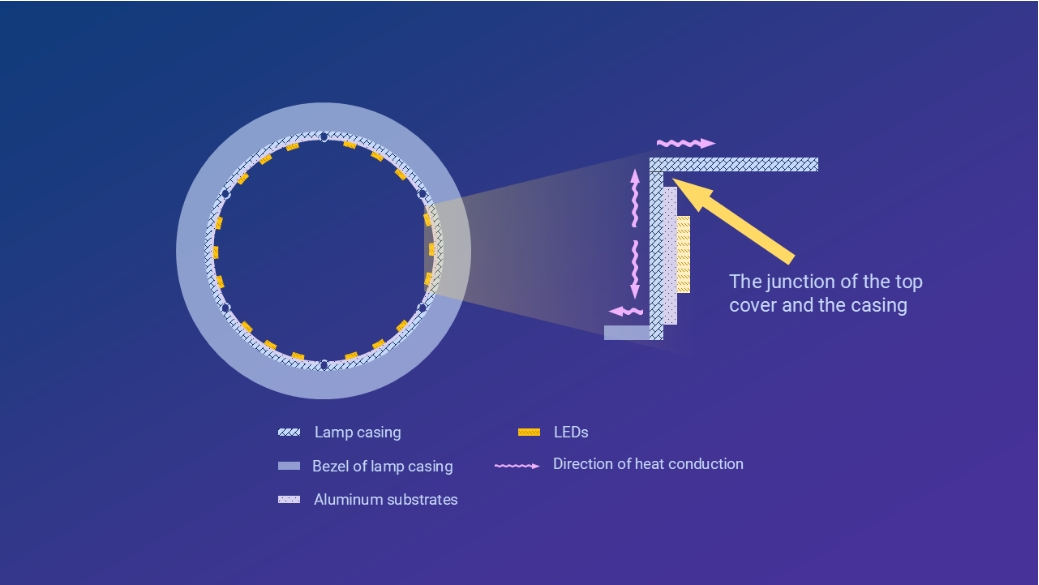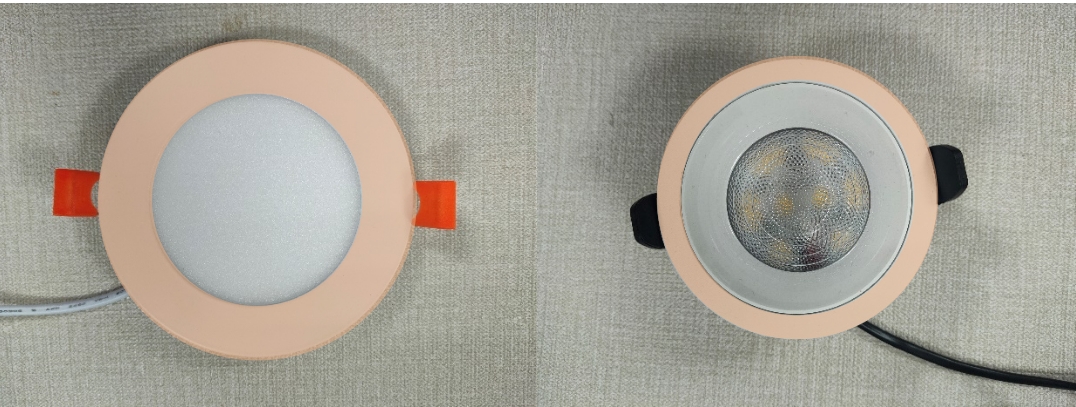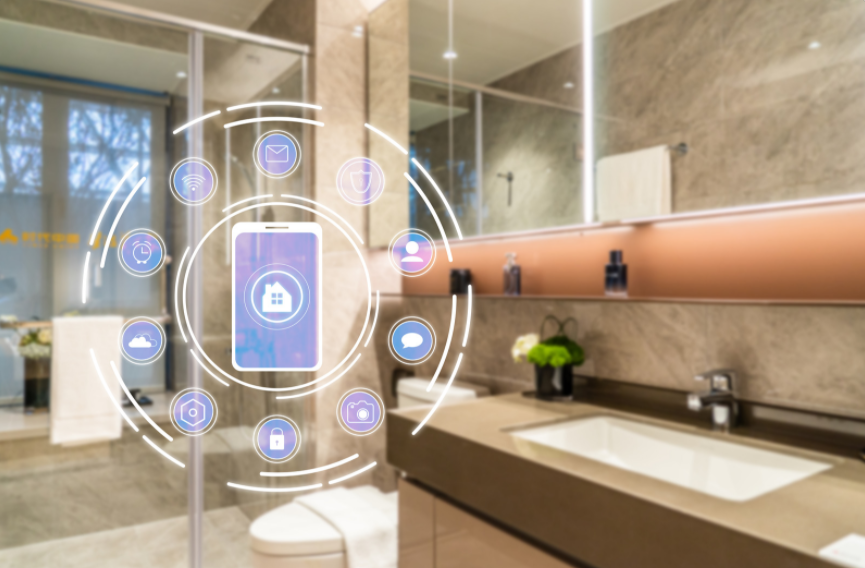I realized that the previous article about side-lit luminaire only mentioned its optical properties without touching on other aspects. In this article, let’s talk about another important aspect – its thermal properties.
So how about the thermal properties of side-lit luminaire? My answer is – terrible, even worse than the optical properties.
Let’s start with the structure of a side-lit luminaire.

As can be seen from the sectional view on the right, the main heat dissipation surface of the side-lit luminaire is on the side. The heat generated by the LEDs is mainly dissipated through this surface.
But unfortunately, for side-lit luminaires, this surface is extremely small (see in the light orange section on the figure below). Therefore, most of the heat generated by the LEDs is conducted downwards through this surface to the bezel of the lamp casing, or upwards, attempting to reach the top cover.

Obviously, the area of the bezel of the lamp casing is not large, so it is particularly important for heat to conduct upwardly to the relatively large area of the top cover.
However, since the top cover and the casing are not integrated but connected, to achieve good thermal conduction, silicone grease must be used between the top cover and the casing for connection. But from the top view on the left, due to the thinness of the casing firstly, it is impractical to ensure that silicone grease adheres evenly to such a thin surface during actual production. Secondly, if we ensure there is enough silicone grease, inevitably, some will overflow outside the casing. When enough luminaires are produced, removing this silicone grease becomes a costly task.
So, I bet there’s no silicone grease between the top cover and the shell of the side-lit luminaire you got. This results in the top cover, which should primarily be responsible for heat dissipation, not being very helpful in this regard. Side-lit luminaires mainly rely on the relatively small area of the bezel of the lamp for heat dissipation.
Could it be any worse?
YES

In practical applications, side-lit luminaires are often recessed, so the main heat dissipation surface of the LEDs is blocked by the ceiling, and at the same time, the side of the bezel close to the direction of heat dissipation propagation is also blocked by the ceiling. Therefore, in this case, the heat dissipation of side-lit luminaires will be much worse than in the ideal state.
To make up for this shortcoming, manufacturers of side-lit luminaires blindly increase the area of the bezel (see in the light orange section on the left figure). However, the widening bezel is contrary to the trend of the appearance of the luminaire (see in the light orange section on the right figure).

The more serious problem is the inferior thermal properties of side-lit luminaires make the LEDs very susceptible to damage due to overheating during use. If you also frequently use side-lit lamps, please pay attention to the potential damage in this regard.








